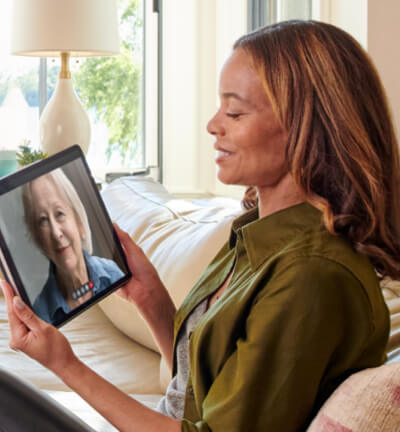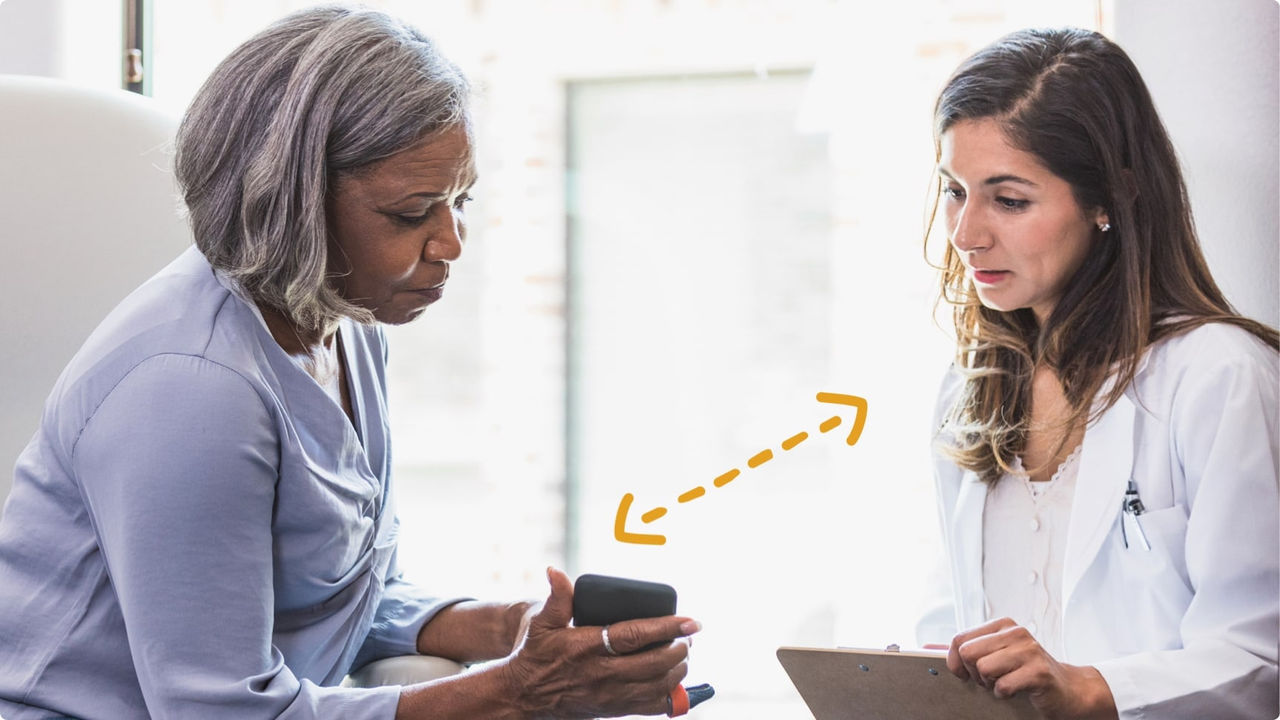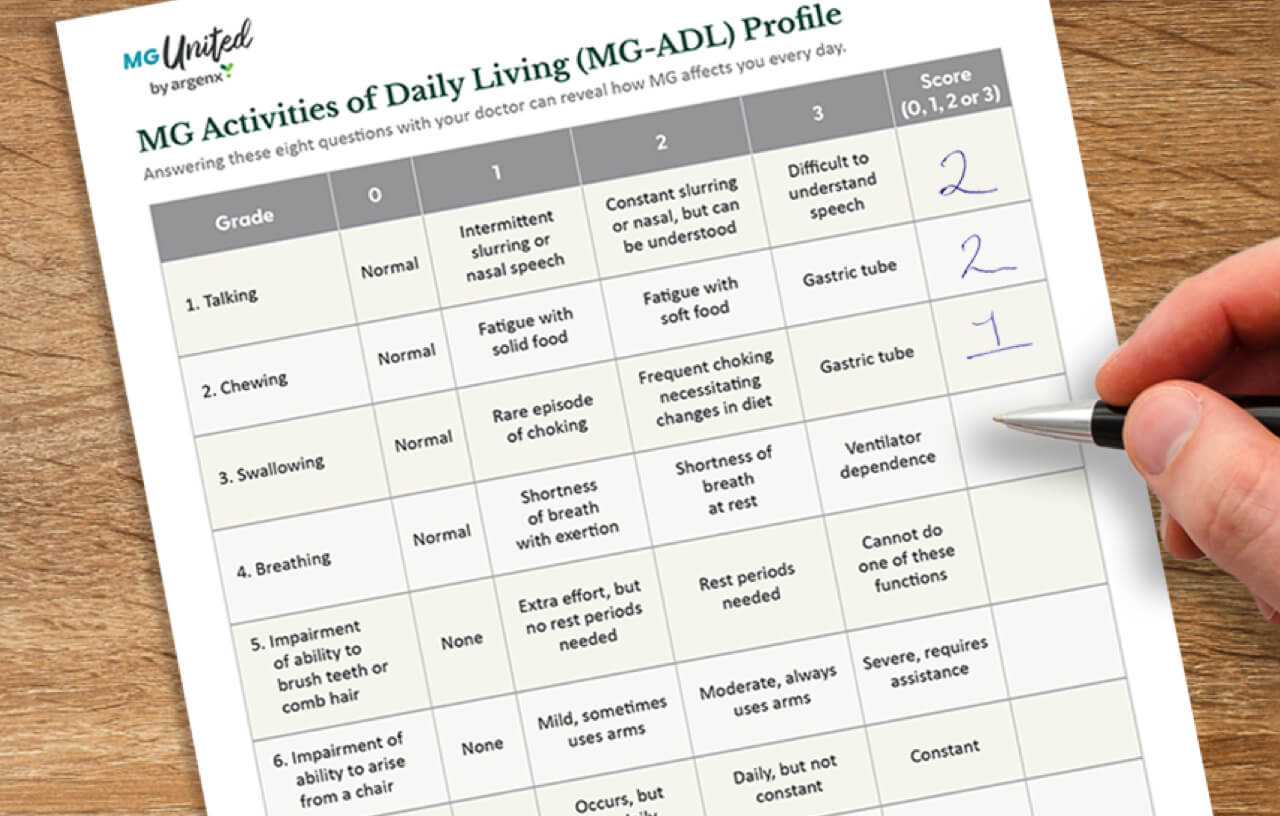Managing MG can be complicated. Being more open with your doctor may help.
Myasthenia gravis (MG) can be a complicated illness to diagnose and manage.1 Did it take a while for you to get diagnosed? Did your MG diagnosis involve seeing multiple doctors?
These experiences are common. MG is a rare disease, and symptoms often vary from person to person and even day to day, making it difficult to detect and diagnose.1,2 And while your MG diagnosis may be validating, you may also learn that managing an unpredictable chronic illness can present a unique set of challenges.
Long-term management of MG takes a strong partnership between you and your care team. For some tips on how to better partner with your doctors, we spoke to Dr. Emma Ciafaloni and Dr. Niraja Suresh, neurologists with expertise in MG, and also Dr. Stacey Batista, a certified patient advocate.
Self-advocacy in healthcare is super important.
Try to Find a Doctor Familiar with MG
If you are in search of a doctor for ongoing management, it may be helpful to find one who is familiar with MG. A resource some utilize is searching MG advocacy groups such as the Myasthenia Gravis Foundation of America (MGFA), which is specifically dedicated to MG, or the Muscular Dystrophy Association, which supports many neuromuscular illnesses including MG. If you are a part of a myasthenia gravis support group, you could also consider asking other members for a recommendation.
If you’re moving and need to find a new doctor familiar with MG in the area, consider asking your current doctor for a referral. You can also look up the neurology department at a hospital in the new location to find a neuromuscular specialist. Also check with your insurance company when you change doctors, as sometimes coverage may change.
“Coordinated care led by a primary care doctor and a neurologist usually addresses most of your needs,” said Dr. Suresh. “Having a free flow of communication among your entire care team is very important. I’ve found that getting workups at the same time from several different doctors, or going from doctor to doctor, can get very confusing.”
Share Your Symptoms with Your Doctor in Detail
Since MG symptoms may be difficult to measure, change over time and vary daily, your doctor considers your description of symptoms to help develop or adjust your MG treatment plan.1 The tips that follow may help you make the most of your appointment:
Write down your symptoms in a concise, organized way so you can share them with your doctor to review. Some things to consider are: How often do symptoms occur? How severe are they? Are they better on one day and worse the next? How long do symptoms last? Do they go away for a time and then recur?
Track and share your symptoms over time. This lets both you and your doctor see variations and patterns in what you’re experiencing. You can keep a daily log or diary manually or use apps on your phone to track and share your symptoms. Likewise, a self-assessment tool such as the Myasthenia Gravis Activities of Daily Living (MG-ADL) may help you and your doctor monitor how symptoms are affecting your day-to-day activities.
Try to give your doctor a clear picture of your symptoms since your last appointment. Even if you are feeling great at the time you see your doctor, you should still report symptoms you may have had a week or a month ago.
Describe your symptoms in detail. According to Dr. Suresh, the way in which you describe your symptoms and how they affect your daily activities can also help your doctor get a better idea of what you have been experiencing and may help them develop an appropriate treatment plan.
“Rather than say, ‘I got all this testing done and they can’t find anything,’ you may want to say, ‘I’m having trouble swallowing. I’m having difficulty speaking and breathing. I can get up from a chair, but I can’t walk to my mailbox,’” said Dr. Suresh. “Let your doctor know if your symptoms can be disabling. That way they can see that something serious is going on and that they need to take a closer look at treatment.”
It may be helpful to capture pictures of ocular and facial symptoms as they occur. Some facilities allow you to email the images to your care team or you can share them during a telemedicine visit or an in-person office appointment. Be sure to check with your healthcare provider first before e-mailing them anything.
Share your experiences openly and honestly with your doctor.
Work with Your Doctor and Care Team to Find a Treatment that Works for You
To help find the right treatment for you, be open with your doctors about your symptoms and what parts of your daily life are most important to your health, safety and happiness. Let them know what other illnesses you have and what other medications you are on. All this information will allow your doctor to determine the most appropriate way to move forward in your management plan.
“Finding an appropriate treatment—and a way of managing MG going forward—requires some patience and a willingness to explore and try different options,” said Dr. Batista. “In my experience, being open with your doctor will serve you well.”
It’s important to always let your doctor know about any changes in your symptoms, as they may lead to a worsening condition or sometimes even a myasthenic crisis.
If you are starting a new MG treatment, be sure to ask your doctor any questions you may have, such as what to expect or any known common side effects. Then, keep your doctor updated on your progress or any side effects you may experience.
Do your own homework, but also trust your physician.
Continue Learning About Your MG
Even if you were diagnosed with MG a long time ago, it may be beneficial to continue to learn more about your illness. Dr. Ciafaloni encourages people with MG to ask their doctors anything MG-related—from inquiring about their experience treating people with MG to whether they can recommend a support group. Doing your own research may be helpful too, as long as you rely on reputable sources and follow up with your doctor with questions.
“There’s a lot of misinformation online that can be confusing and misleading,” Dr. Suresh said. “It’s often tempting to self-diagnose after reading something online. You may have another medical condition that may or may not be related to MG. Researching on your own can be educational. Be sure to always speak with your health care team, utilize educational tools and follow any guidance provided by them.”
Don’t Be Afraid to Get a Second Opinion
If you have a new doctor who is having difficulty understanding how your symptoms may relate to MG, you may want to seek a second opinion.
“MG is a serious condition, but there are ways to manage it,” said Dr. Batista. “It requires support and collaboration of a care team that believes in it. It should be a partnership.”
Dr. Suresh agreed, adding: “In general, physicians don’t mind you getting a second opinion at all. I don’t consider it being disloyal to your clinician.”
Be Open and Honest with Your Doctor
Stephanie, who lives with MG, described her relationship with her doctor as amazing. It helps that she often shares her concerns with him, continues to do her own research on MG and feels listened to when discussing treatment options.
“Self-advocacy in healthcare is super important,” she said. “I feel that I have a say in my care, which is really important to me.”
Meredith, another person who lives with MG, emphasized that to build a collaborative relationship with your doctor, you need accountability, mutual respect and honesty.
“Your health is specific to you and no one else,” she said. “Share your experiences openly and honestly with your doctor because they’re not with you day in and day out.”
According to Dr. Suresh, even advocating for little changes can make a big difference.
“If you’re experiencing weakness or trouble moving, it’s important you tell your doctor. It may be that having a walker or cane could help you, even if you don’t use it all the time. If you have double vision, you may need glasses,” she said. “These small changes may help toward improving your quality of life.”













